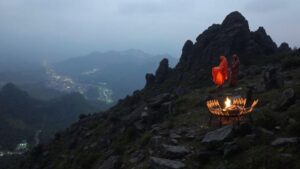How explorers mitigate risks in documenting unstable subterranean environments.
How Explorers Mitigate Risks in Documenting Unstable Subterranean Environments
Exploring subterranean environments, such as caves, mines, and fault tunnels, presents a unique set of challenges, particularly when these environments are unstable. Factors such as geological formations, potential flooding, and rock falls pose significant risks to explorers. To ensure safety while documenting these areas, explorers employ a multifaceted approach that incorporates advanced technology, strategic planning, and adherence to safety protocols. This article delves into the methods used to mitigate risks in these perilous explorations.
1. Risk Assessment and Planning
Before embarking on an exploration, thorough risk assessments are paramount. Explorers conduct extensive research on the regions geological history and potential hazards. For example, the Rugged Mountains of Utah presented unique challenges during the 2020 subterranean explorations where exploratory teams analyzed historical seismic data and geological maps to identify zones prone to collapse.
- Evaluate geological stability using geological surveys.
- Analyze historical incident reports from previous explorers.
Also, explorers often develop contingency plans based on these assessments to address potential emergency scenarios, such as sudden flooding or rock slides. Provisions for rescue equipment and emergency communication devices are standard practice.
2. Use of Technology
Modern exploration is significantly enhanced by utilizing cutting-edge technology. Tools such as ground penetrating radar (GPR) and 3D imaging are essential in mapping subterranean environments before entry.
- Ground Penetrating Radar (GPR): Provides a non-invasive method to visualize the stratigraphy and identify potential hazards.
- 3D Imaging and Mapping: Enables accurate layout and analysis of cave systems, making navigation safer.
For example, in 2021, explorers in New Zealands Waitomo Caves employed GPR technology to locate hidden water pathways, significantly reducing the risk of flooding during their expedition.
3. Training and Safety Protocols
Comprehensive training is crucial for explorers confronting unstable environments. Organizations such as the National Speleological Society offer specialized courses on cave safety and rescue techniques. Explorers are trained in the following areas:
- Safe navigation and climbing techniques.
- Emergency medical response specific to subterranean settings.
Plus, explorers often operate in teams, which aids in mutual oversight; the buddy system not only provides support during exploration but also ensures that help is readily available in case of emergencies.
4. Environmental Monitoring
Continuous monitoring of environmental conditions is vital during any subterranean expedition. Explorers may utilize various sensors to measure:
- Air quality: Essential in avoiding toxic gas buildup.
- Humidity levels: High moisture can signal flooding risks.
For example, in the Sierra Nevada Mountains, teams monitoring air quality discovered dangerous methane levels, prompting immediate evacuation and a reassessment of exploration protocols, demonstrating the importance of vigilant monitoring.
5. Collaboration with Experts
Collaboration with geologists and other experts can provide invaluable insights that enhance safety protocols. By integrating scientific research and expertise, explorers can better understand the geology they are interacting with. For example, in 2019, a collaborative project in the Cave of Swallows in Mexico brought together spelunkers, geologists, and hydrologists to assess the areas cave system dynamics.
This interdisciplinary approach yielded critical data on flash flood potential and cave stability, which significantly improved the safety measures applied during subsequent explorations.
6. Real-World Applications and Lessons Learned
The lessons learned from past explorations are vital in shaping future practices. The tragic 2014 incident in the Tham Luang cave in Thailand, where a youth soccer team was trapped, underscored the need for thorough risk assessments, expert collaboration, and the urgent implementation of thorough environmental monitoring techniques.
Conclusion: Actionable Takeaways
Mitigating risks in unstable subterranean environments requires a holistic, strategic approach that combines advanced technology, expert training, and collaborative efforts. As explorers continue to navigate these often treacherous terrains, the methods outlined in this article demonstrate the importance of rigorous planning and proactive risk management.
Future explorers can take the following actionable steps to ensure their safety:
- Conduct detailed geological assessments of planned exploration sites.
- Incorporate advanced technologies for mapping and monitoring.
- Invest in robust training programs focused on safety and emergency response.
By adhering to these principles, explorers can significantly enhance their safety and success rates in documenting the incredible, yet unpredictable, subterranean worlds.



